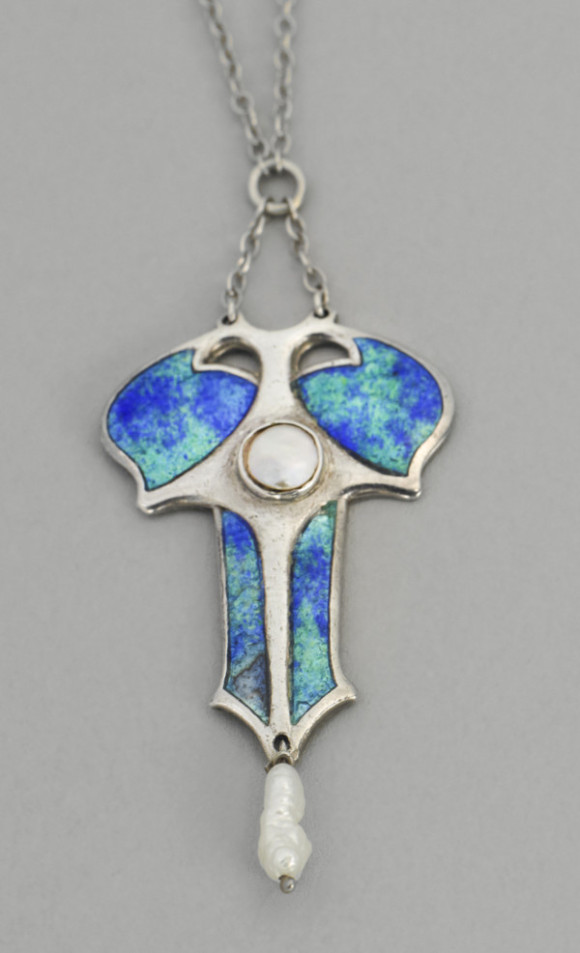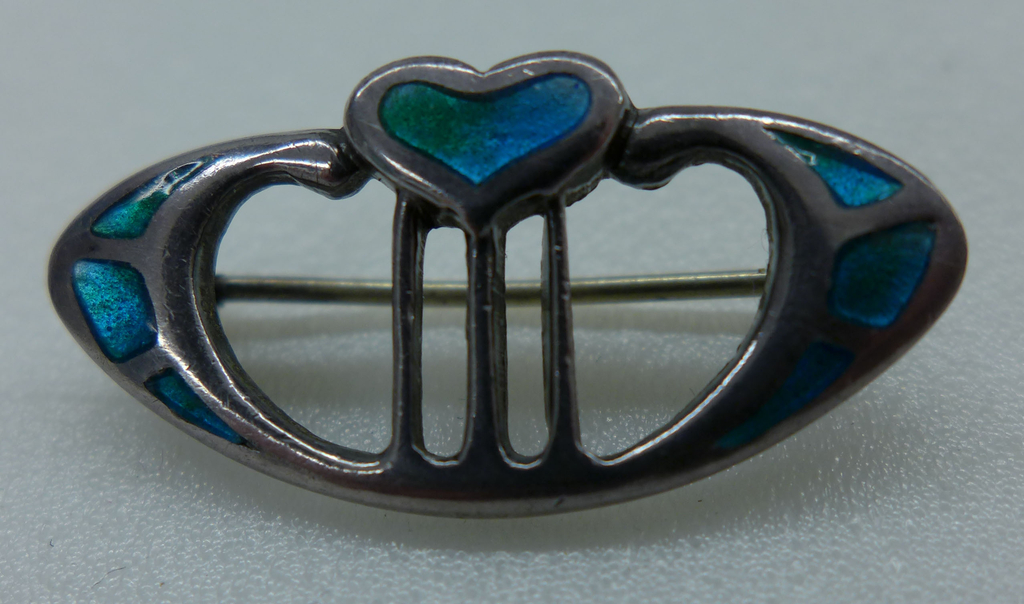In summer, when weddings are frequent, the thought of objects given in affection or love, makes a visit to the jewelry collection seem appropriate. This heart-form brooch is one of a group of jewelry by Charles Horner (English, 1821-1896) given to the Museum in December. Horner (English, 1821-1896) was an actual silversmith, watchmaker and enamellist who soon developed his talent for business. He built both a wholesale and retail business in arts and crafts movement jewelry, thimbles, some table silver and other small domestic wares that combined silver and enamel, and occasionally were set with stones. Like many specialist producers, his jewelry may was retailed by large stores, wishing to capitalize on the appeal of jewelry designed by Archibald Knox and others for Liberty & Co, in London. Liberty’s was identified with the Art Nouveau and Arts and Crafts movement styles to such an extent in Great Britain and the rest of Europe, that many –including the Italians-called it Liberty style-or stilo Liberty. But, from Birmingham and other Midland English manufacturers, designs aimed at a middle class audience –both domestic and abroad- flowed forth. Horner had a whole studio of enamellists working on a set of designs, that could be produced in a variety of colors, as well as functions. Some of the designs could be used as pendants or brooches; designs for ends of hatpins could be re-purposed for buttons, and so on. The mixing of cast silver elements with good quality enamel that was not large or complicated meant that many such objects could be produced in Horner’s workshops, with an efficiency of specialization, that enabled him to produce large numbers of pieces, and yet maintain quality. In fact, it was not until after Charles Horner’s death, that his son James actually created a purpose-built factory in 1905 at the peak of the firm’s jewelry business, rather than have various sites for different aspects of the work. It was from this factory that this brooch emerged, along with the other pieces in CH’s collection, including a lovely pendant (2013-55-6) for which a drawing, showing the piece with green enamel, exists–confirming the variations of palette with a form.

Pendant, 1911. Made by Charles Horner Ltd.; Gift of Judy Francis Zankel, 2013-55-6.
The fact that the Horner firm chose to have the silver produced by his workshops, assayed in Chester, rather than Birmingham, which was closer, suggests that he also had a sense of competitive advantage. Birmingham was where many of the wholesale designers and dealers went to sell to the London and export trade, and the likelihood of keeping his designs a secret would have been far less had they had to go through the assay master there to be marked. Thus this piece of jewelry, probably purchased for a sweetheart, is the product of an enterprising designer-marketer who saw the potential in making jewelry that reflected design fashion but was affordable.
